6 types of cocktail glasses and what they’re used for, according to an expert
Our team is dedicated to finding and telling you more about the products and deals we love. If you love them too and decide to purchase through the links below, we may receive a commission. Pricing and availability are subject to change.
Contrary to popular belief, bigger isn’t always better when it comes to the size of your cocktail glass. The reason being: A larger cocktail takes longer drink, making it more likely for the ice to melt and dilute the flavor — that is, unless you’re a guzzler. But, if you’re here reading about types of cocktail glasses, we’re going to assume you prefer to do things properly.
So, for the rule followers out there and anyone else who takes their drinking seriously, the type of cocktail glass you should use depends on your type of drink.
To get more info on why glasses are so important, In The Know spoke with Tobin Ludwig, co-founder and COO of Hella Cocktail Co., a minority-owned and operated mixology company that was founded in New York City in 2011 by three friends: Ludwig, Eddie Simeon and Jomaree Pinkard.
The friends and founders started out by making bitters in mason jars in their Brooklyn apartment to gift to friends a family. Over a couple of years, however, the hobby evolved into a business selling premium small batch cocktail bitters. Today, the brand has expanded to selling a full line of premium cocktail mixers as well (all available on Amazon).
“Most of the time, the vessel does matter,” Ludwig, a former NYC bartender, said in regards to the purpose of using different types of cocktail glasses. The glass can enhance the aroma, taste and overall drinking experience.
A really good bartender will choose a glass to enhance the flavor of a drink or allow for the correct temperature control. For example, if a drink is shaken or stirred, meaning it’s chilled but not served with ice, you’ll get a glass with a stem. Holding the glass by the stem prevents your hands from warming up the cocktail too quickly.
That said, sometimes the choice of glass in a bar can also be based on what looks best or helps to tell the best a story.
“Although rules are meant to be broken from time to time, I’d always make a cocktail first in its recommended vessel before trying it in something else,” Ludwig said.
Still, you wouldn’t serve red wine in a shot glass or a martini in a champagne flute. With that said, read below to find out which types of cocktail glasses are used for which drinks and why you may want to follow the “rules” from time to time.
1. Highball Glass (or Collins Glass)
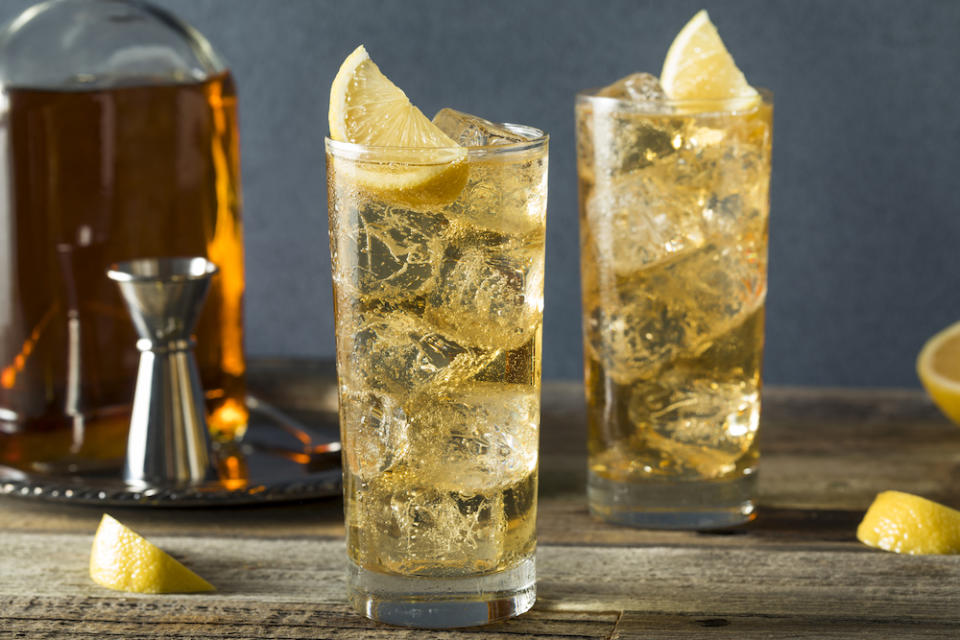
A highball is a tall, skinny glass, also sometimes referred to as a Collins glass.
“Highball glasses are for ‘long drinks’ — anything with a carbonated mixer would likely be best suited for a highball,” Ludwig said. “Highballs as a category are drinks that are refreshing, served over ice, not that potent, and generally perfect for a hot day or when you plan on having more than one.”
This means the highball glass is perfect for gin and tonics, vodka sodas or as Ludwig suggests, bourbon mixed with Hella Cocktail Co.’s Bitters & Soda.
Shop highball glasses:
Shop: Godinger Claro Modern Vintage Highball Glasses Set of 4, $14.99 (Orig. $40)
Shop: Paksh Novelty Italian Highball Glasses Set of 6, $23.98 (Orig. $29.99)
Shop: Lenox Tuscany Classics Highball Glasses Set of 4, $37.49 (Orig. $72)
Shop: Williams Sonoma Reserve Highball Glasses Set of 4, $79.95
2. Single Rocks Glass
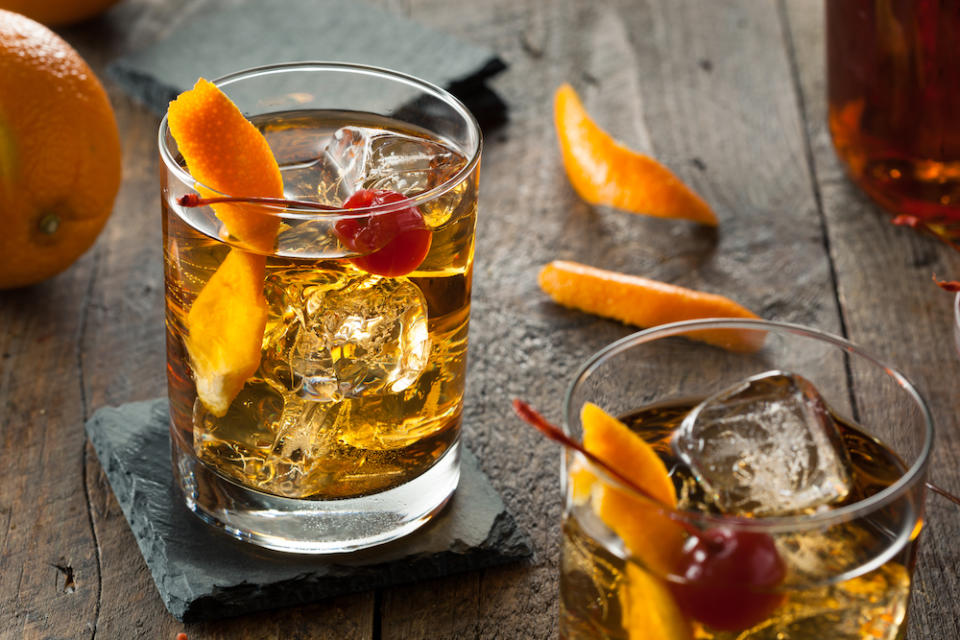
Rock glasses are smaller compared to a highball, usually 6–8 ounces. “Rocks glasses are generally used for booze-forward cocktails or even spirits served neat or with ice (on the rocks),” Ludwig said. However, there’s also a slightly bigger version called a double rocks glass.
“Nowadays, the ‘double rocks’ is a more en-vogue version of this glass. It has the same silhouette, but up to twice the liquid volume. If you get an old fashioned at a serious cocktail bar, it will be served in a double rocks 90 percent of the time. The double rocks is also very versatile and great for a margarita and other shaken cocktails with juice, as well as classic stirred cocktails like negronis,” Ludwig said.
Shop rocks glasses:
Shop: Libbey Heavy Base 4-pc. Double Old-Fashioned Glass Set of 4, $7.99 (Orig. $9.99)
Shop: Luminarc Sterling Double Old Fashioned Glass Set of 4, $11.24 (Orig. $25)
Shop: Hotel Collection Blue Ombre Set of 4 Rocks Glasses, $20.99 (Orig. $53)
Shop: MOFADO Crystal Rocks Glasses Set of 2, $28 (Orig. $34.95)
Shop: Marquis by Waterford Moments Double Old Fashioned Glasses Set of 4, $50
3. Coupe Glass
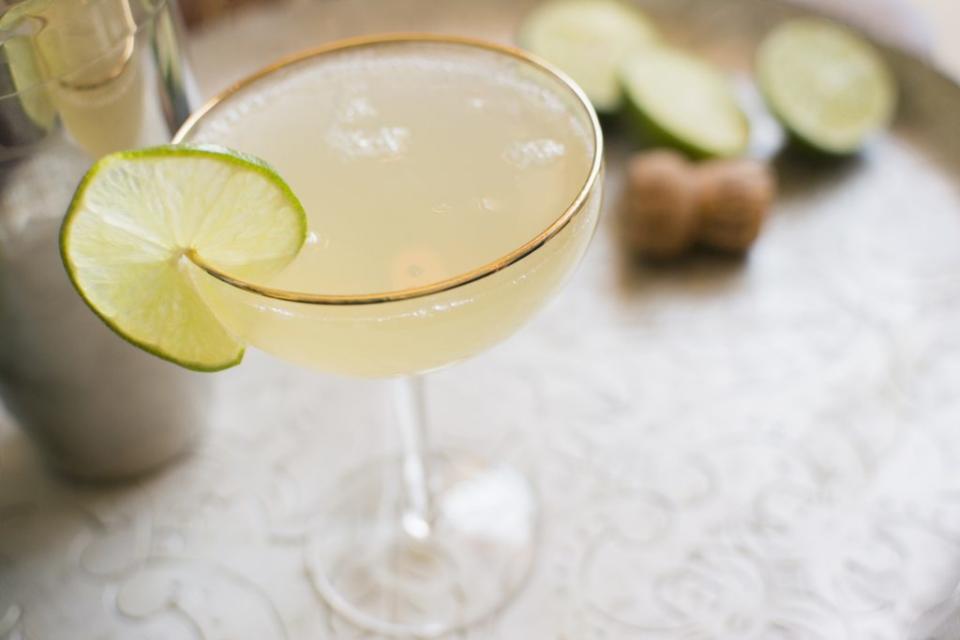
Coupe glasses have gained popularity in the last 10-–15 years for replacing martini glasses, because they’re easier to sip from without spilling and slightly smaller. However, they’re versatile in that you can serve a lot of types of drinks in them.
“They’re heavily used at cocktail bars in places like New York City where bars are smaller and you need to make every inch of shelf space count. The last bar I worked at, Bar Fedora in the West Village, used coupes for nearly all of their cocktails that were served ‘up’ and were their go-to for sparkling wines, which of course, is the original intent for the coupe glass.
“I love coupes at home for the same reason. You get more bang for your buck. Unless I’m feeling nostalgic, I always prefer a martini served in a coupe versus a traditional martini glass,” Ludwig said.
Shop coupe glasses:
Shop: Hotel Collection Coupe Cocktail Glass Set of 4, $14.99 (Orig. $39)
Shop: Luminarc Assorted Brew Bar Craft Coupe Martini Glass Set of 4, $27.99
Shop: Bormioli Rocco Italian Cocktail Coupe Glasses Set of 4, $32
Shop: Martha Stewart Clear Optic Coupe Glasses with Gold-Tone Rims Set of 4, 32.49 (Orig. $70)
4. Martini Glass
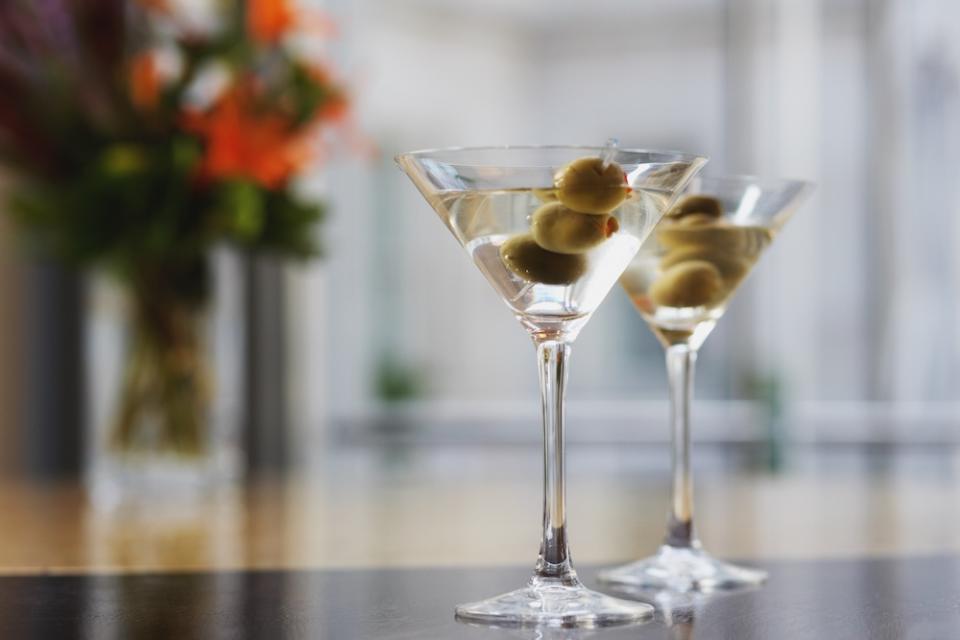
The first thing that comes to mind when you hear “cocktail glass” may be a martini glass, and that’s because the glass is often used as a universal symbol for cocktail (it even has its own emoji).
“Almost all of the most iconic cocktails are served in this style. This includes martinis, of course, but also Manhattans and their variations (like Rob Roy), as well as a lot of other new age classics like the cosmopolitan (aka the cosmo, made insanely popular by ‘Sex and the City’), the lemon drop and the eponymous espresso martini,” Ludwig said.
Martini glasses can be quite large though, especially for serving booze-forward cocktails. Ludwig gave the example of a martini made up of 3–3.5 ounces of alcohol, plus one ounce of water after being stirred with ice — that’s a 4–4.5-ounce cocktail. However, martini glasses are often 8-ounces or more in size, so the glass may appear almost empty when serving.
“Another reason many restaurants may serve martinis in a coupe is because you’re going to get away with a standard serving of booze and still offer a full glass,” Ludwig said.
Shop martini glasses:
Shop: Dailyware Martini Glasses Set of 4, $9.99
Shop: Luigi Bormioli Michelangelo Set of 4 Crystal Martini Glasses, $20
Shop: Juvale Martini Glasses Set of 6, $24.99
Shop: Mikasa “Clear Cheers” Martini Glasses Set of 4, $29.99 (Orig. $68)
Shop: Lenox Sweet Inspirations Tuscany 6 oz. Martini Glass Set of 6, $37.49 (Orig. $72)
5. Flute
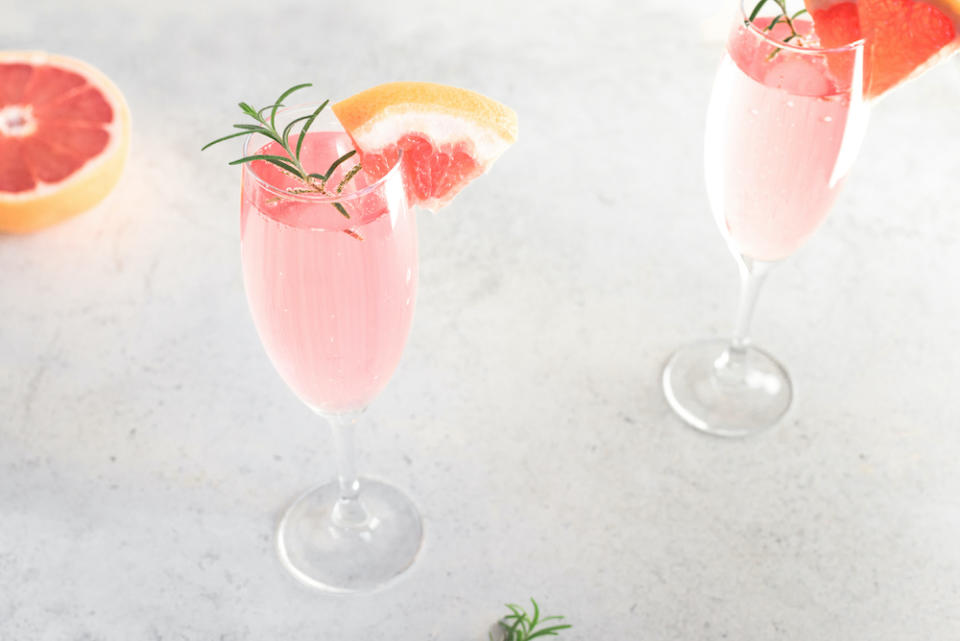
As you probably already know, flute glasses are usually used to serve champagne. However, they can also be used to serve any cocktail containing sparkling wine. Think: mimosas, bellinis or a negroni sbagliatos (sparkling negronis).
“With a specific shape and purpose, this glass is designed to slow the rate by which the bubbles can escape by limiting surface area,” Ludwig said. “It’s always handy to have a few flutes around for those festive moments when a bottle of sparkling wine is popped.”
Shop flute glasses:
Shop: KooK Stemless Durable Champagne Flutes Set of 8, $25.95
Shop: Hotel Collection Black Stem Champagne Glasses Set of 4, $27.99 (Orig. $70)
Shop: Mikasa “Clear Cheers” Flutes Set Of 4, $29.99 (Orig. $68)
Shop: Lenox Tuscany Classics Toasting Flute Set of 4, $32.99
Shop: Schott Zwiesel Tritan Pure Champagne Flutes Set of 6, $83.99
If you’re looking to fill up your bar cart at home or simply want your cocktails to look and tastes like a pro made them, getting different types of cocktail glasses is a step in the right direction. We’d also suggest getting a solid cocktail shaker set and hey, there’s nothing wrong with a little help in the form of pre-made mixers like the ones from Hella Cocktail Co. As long as the drink tastes good, that’s the point, right?
If you enjoyed this article, you may also enjoy reading about the Bartesian cocktail maker, which is like a Keurig for alcoholic drinks.
More from In The Know:
Will Smith and Tyra Banks just recreated a classic ‘Fresh Prince’ scene
This queer-owned brand makes natural skincare and makeup accessible
This anti-thinning hair shampoo can remove impurities from your scalp
This blemish stick is the perfect little treatment for unexpected pimples
The post 6 types of cocktail glasses and what they’re used for, according to an expert appeared first on In The Know.

